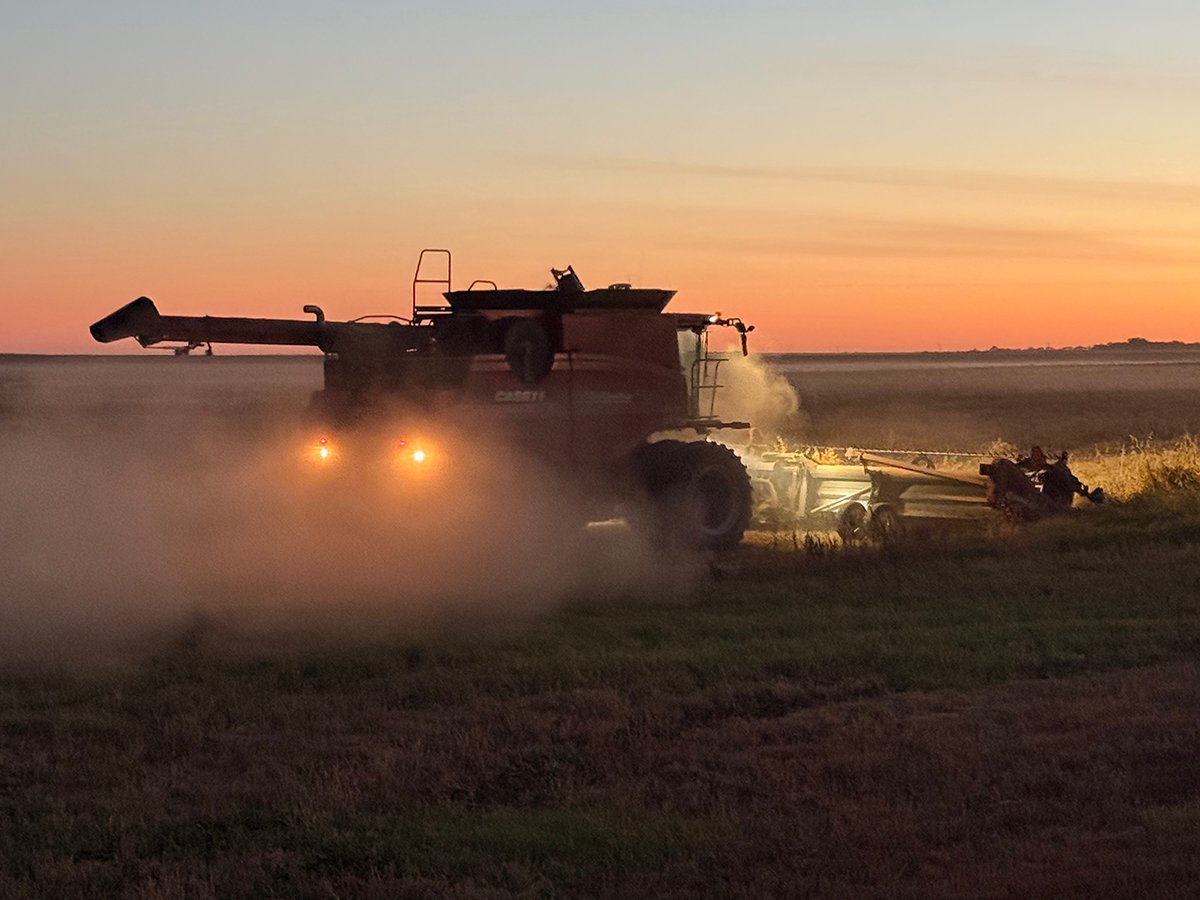When examining young bulls, veterinarians watch for many conditions
besides semen quality that may affect breeding ability.
Many can be corrected, but others will require that the bulls be
eliminated from the gene pool.
Seminal vesiculitis and other infections involving secondary sex organs
are common in young bulls. They are found during rectal palpations.
Depending on the severity of infection, veterinarians will decide
whether treatment, time or culling is the best option.
Seminal vesiculitis is caused by being excessively ridden or from old
Read Also

Downturn in grain farm economics threatens to be long term
We might look back at this fall as the turning point in grain farm economics — the point where making money became really difficult.
infections, such as in the navel, which seed out into this area.
Fertility is reduced when pus is discharged in the semen.
Several common conditions may be encountered when the penis is
protruded during collection.
A persistent frenulum is a ligamentous attachment between the sheath
and penis. This will cause the penis to bend on full erection, making
intromission difficult when breeding. It can also cause the penis to
break if not corrected.
The already-bent penis suddenly bends over when coming into contact
with a cow.
This ligament, or frenulum, can be identified and cut just after the
semen sample is collected. Sexual rest is necessary until the incision
heals. It should be checked later to ensure no scarring has occurred.
Occasionally, there will be two frenulums on the same bull. If not
detected, attempted breeding may also result in ripping, with lots of
bleeding. Blood is detrimental to semen quality and fertility suffers.
The bull cannot rest during the breeding season to allow the rip to
heal and bleeding continues with each erection.
Persistent frenulums are highly heritable, so purebred producers should
closely scrutinize breeding forms when purchasing their herd sires.
Warts are another commonly encountered condition on bull penises. They
can often be surgically removed as long as they do not involve the
vital structures on the tip of the penis or extend into the urethra,
the duct that transports urine and semen.
Veterinarians may remove the wart, cauterize the bleeding if necessary,
suture where appropriate and check later for reoccurrence. Warts are
invariably rough and can rip or tear, causing bleeding during breeding.
Again, fertility is impaired.
Large warts near the tip of the penis can impair nerve supply, making
it impossible for bulls to hit the mark during copulation.
There doesn’t seem to be a correlation between body warts and penile
warts. Generally, most wart removals completely heal in two to three
weeks.
Cuts and abrasions are easy to diagnose when visually examining the
penis. Treatment may be necessary, but most cases simply require the
bull to rest for varying lengths of time. Scarring may occur in severe
cuts, which makes full penile extension impossible. This is a definite
cull candidate.
All these problems clearly show how important it is for veterinarians
to fully examine a bull’s extended penis during semen evaluation. Most
problems found here can be treated, provided adequate time is available
until the breeding season.
Young bulls’ prepuces are tightly adherent to the penis before puberty.
They pull away as the bulls’ erections progress, which can cause
bleeding and impair fertility.
Seeing this adherence at evaluation time tells veterinarians that the
bull may be immature and has never become completely erect. They must
insure this before allowing the young bull into the breeding herd.
Hair rings strangulating the penis occur when bulls mount others and
the hair from the back forms a tight ring around the penis.
Most are easily removed, but in the worst case I ever saw, a
constricted hair ring cut off the tip of the penis, rendering a
potentially good bull useless as a breeder. Warts near the tip of the
penis also provide an object for the hair to easily wrap around.
These examples show that many potential problems can be corrected by
paying attention during a young bull’s first semen evaluation.
Almost all purebred breeders now have semen evaluations performed so
these abnormalities can be detected ahead of time.
Roy Lewis is a veterinarian in a mixed animal practice at Westlock,
Alta.
















